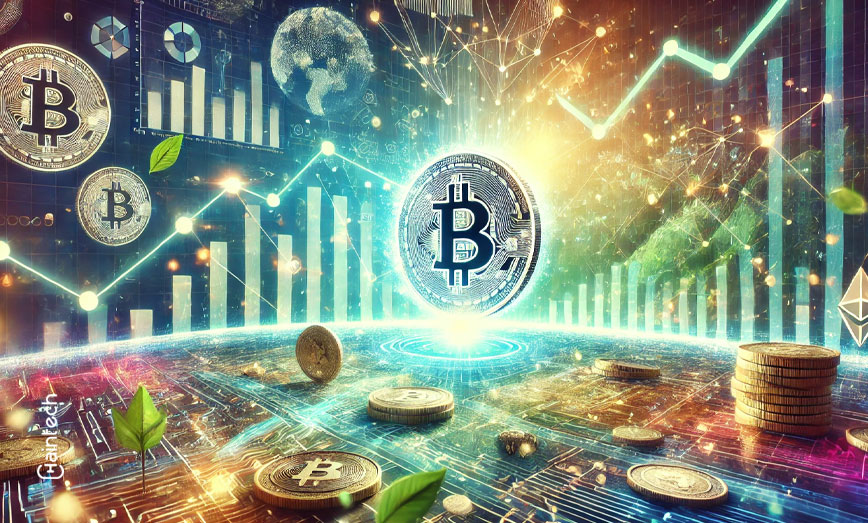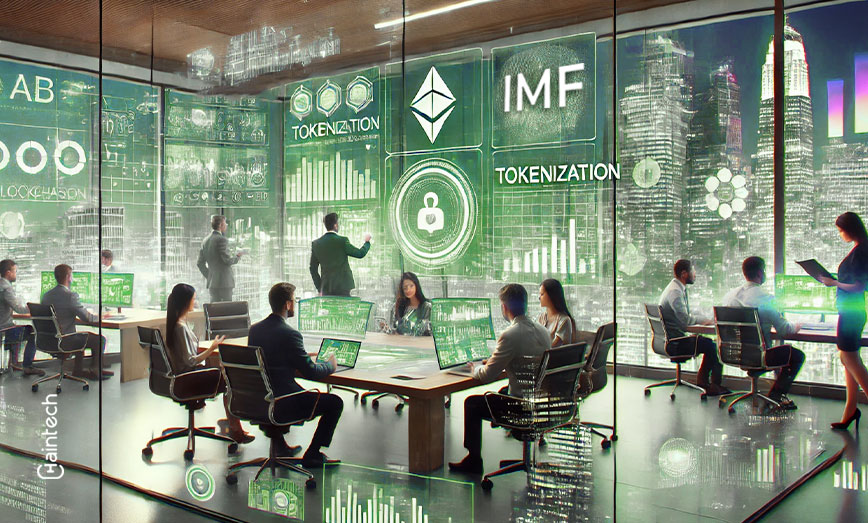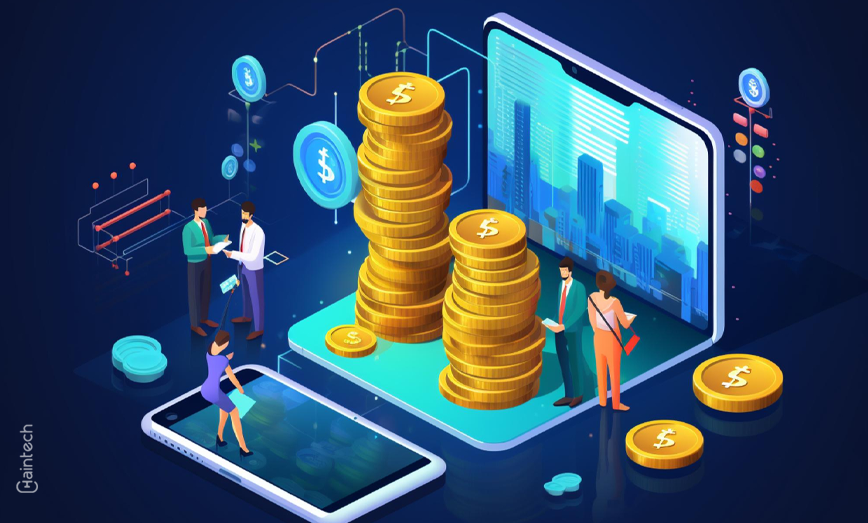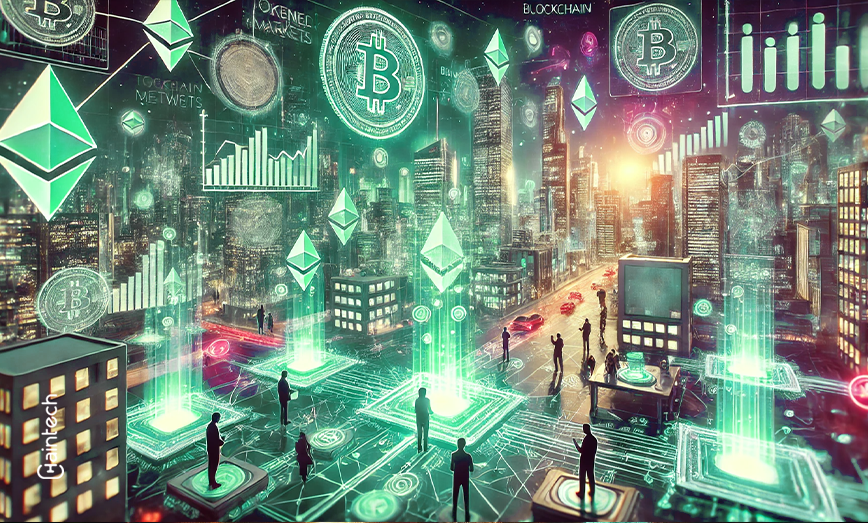Sustainable Finance: Unlocking the Potential of Tokenization

In sustainable finance, tokenization is changing the way people engage in eco-friendly investments. It is making green investments, including renewable energy and carbon credits, possible for everyone. You could own part of a wind farm or invest in reforestation initiatives with only a fractional sum. That is what tokenization does.
There is a demand to invest money for change instead of only making a return. However, conventional finance often restricts small investors from active participation. Tokenization addresses this issue by allowing large-scale projects to be subdivided into smaller, more affordable digital tokens. These tokens are traded or exchanged, allowing everyone to use green investments.
Tokenization in sustainable finance: meaning, impact on green investments, and future potential
- What tokenization in sustainable finance means.
- How it’s reshaping investments in green projects.
- The difficulties and prospects of tokenization in green finance.
What is meant by tokenization in the context of green finance?
In sustainable finance, tokenization can be referred to as converting bigger parts of assets into large but affordable digital assets. Each token endorses assets like a wind turbine, a carbon credit, or a solar farm. Blockchain, a trusted ledger, serves as an electronic bank for these tokens.
Here’s why tokenization matters:
- Accessibility: It lets small investors participate in big projects.
- Flexibility: Investors can trade tokens easily without long waiting periods.
- Transparency: Blockchain makes every transaction visible and trustworthy.
For example, a wind farm project requiring millions in funding can use tokenization to sell small shares to thousands of investors. Each token represents a portion of the wind farm’s output or revenue. This model allows anybody from anywhere to invest in green initiatives with little money.
Due to tokenization, which is beneficial to large projects, smaller investors can more impactfully participate in sustainable finance.
Benefits of tokenization for green investments
Tokenization offers several advantages that make it ideal for green projects. Let’s break them down:
| Benefit | How It Works |
| Accessibility | It allows small contributions and opens green investments for everyone. |
| Transparency | Blockchain ensures clear, trackable records for every transaction. |
| Liquidity | Tokens can be traded quickly, offering flexibility for investors. |
| Cost Efficiency | Eliminates middlemen, reducing fees for both projects and investors. |
| Global Reach | Investors worldwide can fund local and international sustainable initiatives. |
For instance, carbon credit trading is now simpler with tokenization. Companies can buy, sell, and verify credits on blockchain platforms. This transparency ensures that environmental goals are met while preventing fraud.
How tokenization supports sustainability goals
One does not have to look far to see how tokenization fits into major global initiatives like the United Nations’ Sustainable Development Goals (SDGs). These targets are achievable by financing projects tackling climate change, providing affordable energy, and conserving nature.
Here’s how tokenization contributes:
- Clean energy: It invests in solar, wind, and other renewable plants.
- Carbon credits: CEO emissions can be tokenized and used by businesses in carbon offsetting efforts in a clear manner.
- Eco-friendly housing: Developing tokenized real estate provides capital for constructing affordable green housing.
- Conservation projects: Initiatives like reforestation or ocean cleanup can use tokenization to attract more investors.
For example, a tokenized solar farm can sell tokens representing a share of its energy production. Investors not only earn returns but also support renewable energy. Tokenization ensures that environmental and social goals are met while providing financial rewards.
Real-world examples of tokenization in action
Tokenization isn’t just a concept. It’s already driving sustainable projects worldwide. Some examples are as follows:
- Carbon trading: Companies can buy and sell tokenized carbon credits on projects on KlimaDAO that give ordinary people more access to assets through blockchain technology. These credits can allow companies to become more sustainable in their strategies sooner.
- Renewable energy: The Power Ledger allows people to sell excess solar energy through a blockchain ledger, thereby creating a non-centralized economy for renewable energy resources.
- Green bonds: Governments and private firms issue tokenized bonds to fund renewable projects. These bonds attract both large and small investors.
- Sustainable farming: Farmers tokenize crops to secure funding before harvest. Investors earn returns based on crop sales.
- Conservation efforts: Reforestation projects use tokenization to raise funds for planting trees. Each token represents a share of the project’s carbon offset.
These examples highlight how tokenization is making sustainability initiatives more efficient and impactful.
Challenges in tokenization
Tokenization has a vast horizon regarding retirement, but it also has its ups and downs. Here are some key issues:
- Regulatory uncertainty: Many countries lack clear rules for tokenized assets, creating confusion.
- Technological barriers: Blockchain systems can be complex and costly, especially for smaller projects.
- Scalability issues: Current platforms struggle to handle large transaction volumes efficiently.
- Investor awareness: Such methods are still uncommon, and many do not know how to leverage these investment forms.
Nevertheless, things are improving. Many countries are developing new laws regarding tokens, and crypto technologies are evolving to acquire a more friendly manner. If these issues are solved, areas with an even larger scope for sustainable finance will emerge.
Did you know?
Some countries are using tokenized bonds to fund national renewable energy initiatives.
How tokenization makes green investing simple
Tokenization removes barriers that have traditionally kept many people out of sustainable investing. Here’s how it simplifies the process:
- Low entry costs: You can start with as little as the price of one token.
- Instant transactions: Blockchain ensures fast and secure buying or selling of tokens.
- User-friendly platforms: Apps and websites make finding and investing in tokenized projects easy.
- Secure ownership: Digital tokens provide clear proof of ownership, reducing fraud risks.
- Global accessibility: Anyone with internet access can participate in tokenized investments.
- Equal opportunities: It levels the playing field, allowing small and large investors to contribute equally.
For example, a teacher in the US can invest in a reforestation project in Africa with just a smartphone. Tokenization connects people to projects worldwide, making green investing simple and rewarding.
The future of tokenization in sustainable finance
Tokenization is just getting started. Experts have claimed that this will change how people invest in sustainable finance in the future. Here is what is in the pipeline for now:
- Wider adoption: More governments and companies will tokenize assets in order to bring in investors.
- Improved blockchain technology: Faster and more efficient systems will simplify tokenization.
- New use cases: Projects in water conservation, waste management, and clean tech will use tokenization for funding.
- World Through Tokenization: Tokenization will ensure that investors and projects are not only limited to their countries but also enhance global interaction.
Envision a scenario in which everyone can support sustainability projects without much hassle. As mentioned earlier, tokenization will ensure that this vision becomes a reality.
Tokenization is the future of Finance
Of the various methods of building green investments, tokenization is one of the best and the most efficient. It is not true anymore that people do not have access to investments that suit their principles. From renewable energy to conservation, tokenization gives people the chance to be involved in causes that matter to them.
Are you the one to help people change? Make your investments in tokens now and become part of an emerging and healthy ecosystem of the future.
Did you know?
Tokenized carbon credits are already helping companies achieve net-zero targets faster.
FAQs
1. What do you mean by tokenization in sustainable finance?
Tokenization turns assets like solar farms or carbon credits into digital tokens for easy investment.
2. How does tokenization help green projects?
It provides faster, cheaper funding while allowing small investors to participate.
3. Can anyone invest in tokenized projects?
Yes, tokenization is designed to be accessible to people with all income levels.
4. What are examples of tokenized green investments?
For instance, carbon credits, renewable energy projects, and green real estate.
5. So, is Tokenization the way of the future for green finance?
Of course! This is expected to have a significant impact on how global efforts for sustainability are undertaken in the future.









